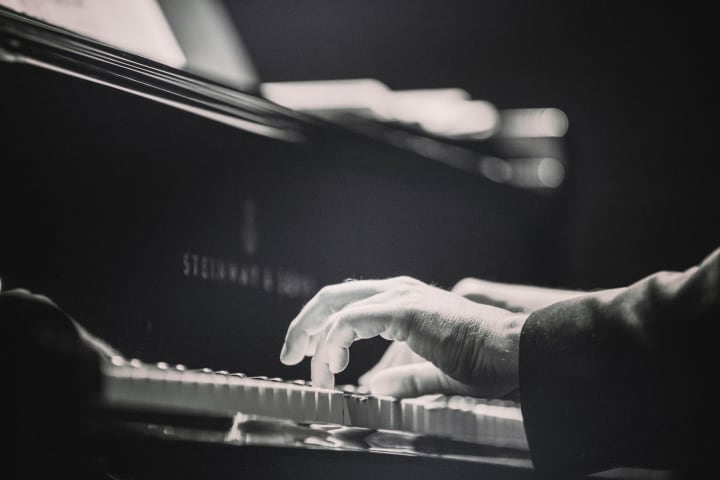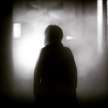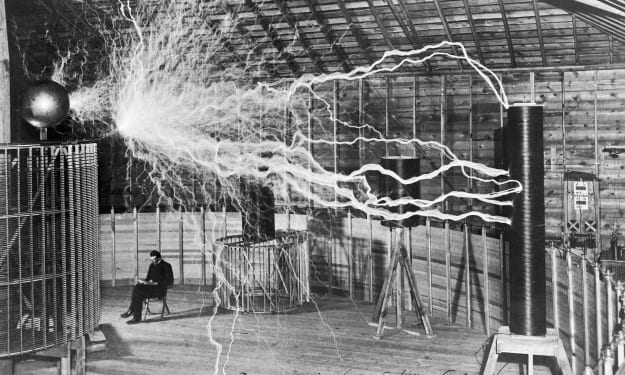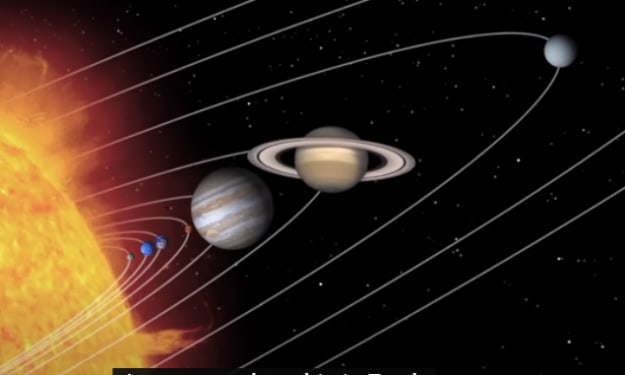
Before the advent of sound recording, someone had to write down a composition, or teach it to other people, for the piece to survive. Many compositions have been lost. Old songs have been forgotten. Manuscripts get mislaid, destroyed, even used as fish wrappings. Some pieces are banned from performance until a set period after an author’s death. Others fall into disfavor, only to be rediscovered by scholars or enthusiasts.
However, many compositions are found under the most unlikely circumstances. Every year, previously lost compositions are found in archives, libraries, estates, even attics. One composition on this list was preserved thanks to a timely volcanic eruption.
Even if you’re not a music buff, you will probably recognize some of the composers on this list from movies, cartoons, documentaries, or just from hearing their works in your day-to-day life. These stories show how much we still have to learn about music.
Thanks to the movie Amadeus, many people believe that Mozart and Salieri were deadly rivals. However, a recently rediscovered composition puts the lie to this story. Mozart, Salieri, and a composer named Cornetti wrote a short cantata, “For the Recovered Health of Ophelia," in 1785. The cantata's lyricist, Lorenzo Da Ponte, had already worked with Salieri, and would go on to work with Mozart on “The Marriage of Figaro,” “Don Giovanni” and “Cosi Fan Tutte."
“For the Recovered Health of Ophelia" was discovered when the Czech Museum of Music began digitizing their archives. It was recently performed in Prague for the first time in over 200 years, in celebration of its rediscovery.
This piece was probably written for a singer, Nancy Storace. Storace performed pieces by both Mozart and Salieri during her life. Mozart later wrote the part of Suzanna in “The Marriage of Figaro” for her. Mozart, Salieri, and Cornetti wrote “For the Recovered Health of Ophelia" to celebrate Storace's recovery from a long illness.
In real life, Mozart and Salieri were contemporaries and competitors, but there's no evidence they had a more-than-ordinary professional rivalry. The story of Amadeus is partly based on a Pushkin play, Mozart and Salieri, where Salieri invites Mozart to a dinner and poisons him. The play was based on a legend that historians dismiss out of hand; whatever rivalry there was between the two composers did not extend to murder.
Anyone who's ever seen a Hollywood wedding scene knows at least one Mendelssohn composition, the "Wedding March," which always plays as the bride and groom leave the church, showered with rice and congratulated by relatives. Mendelssohn wrote this piece as incidental music for A Midsummer Night’s Dream. It’s too bad that’s the one piece he’s known for. Mendelssohn was a prolific composer, writing symphonies, operas, concertos, chamber music, choral works, and much more during his short life.
In 1842, Mendelssohn wrote a privately commissioned song for an acquaintance in Berlin. Mendelssohn did not want the song published, and it never was. The song, called “The Heart of Man is Like a Mine," was sold once in 1862 and again in 1872. After that, no record of it survived. It was as if the piece had vanished into thin air. Scholars considered it lost, perhaps destroyed.
“The Heart of Man is Like a Mine" was only rediscovered in the 21st Century among the papers of a deceased man in the United States. How it ended up there is a mystery; few details have been made public about its rediscovery. However, Mendelssohn fans and scholars are happy to have the original manuscript, which can now be publicly performed for the first time.
8. "Orlando Furioso" (1714) by Antonio Vivaldi

Antonio Vivaldi is one of the most famous and influential Baroque composers, second only to Johann Sebastian Bach. He is best known for a series of violin concerto series called the “Four Seasons,” though his other famous works include “The Contest Between Harmony and Invention” and his settings for the hymn “Gloria in Excelsis Deo."
Until 2012, the only known version of Vivaldi’s opera, “Orlando Furioso,” came from a 1735 manuscript. That all changed when archivists found a version dated from 1714, featuring many new arias that had never been heard before. The 1714 manuscript was “hiding in plain sight” in Vivaldi’s personal library, but since it lacked a composer’s name, it was not identified for nearly three centuries.
Historians did not even know that this version of the opera existed, even though they knew that Vivaldi and his father put on a successful production of Orlando Furioso in 1714. Until the rediscovery of this manuscript, scholars did not connect the dots that this earlier opera had been written by Vivaldi.
This opera allows musicologists and historians to see how Vivaldi evolved as a composer, since there are substantial differences between the two operas in both style and composition. The 20 year gap between the two compositions can also give us insight into how opera changed in such a short time frame.
You have probably heard at least a few works by Johann Sebastian Bach in your lifetime, even if you don’t recognize them. From the haunted house staple “Toccata and Fugue in D Minor” to the meditative “Air on the G String,” Bach has left an indelible impact on Western music that continues to this day.
What you may not know is that J.S. Bach came from a musical family, going back to at least his great-grandfather’s generation. Many of Bach’s children continued this tradition and became notable composers themselves. His sons Carl Philip Emmanuel, Wilhelm Friedemann and Johann Christian Bach all went on to great success; his son C.P.E. Bach even eclipsed his father’s fame for some time. When Mozart said “Bach is the father. We are like children!” he was referring to Carl Philip Emmanuel, not Johann Sebastian.
Many compositions by the Bach family were lost and presumed destroyed when they went missing from a Berlin archive after World War II. In fact, these compositions were sitting, unharmed, in an archive behind the Iron Curtain. The Red Army had taken these archives as a victory trophy, but they had preserved them instead of destroying them.
Since the 1970s, rumors circulated about the true location of the manuscripts. Researchers and authors were stonewalled, even after the Soviet Union’s collapse. In 1999, a Harvard professor finally located the lost manuscripts in Kiev, Ukraine. The collection included over 5,000 manuscripts from the Bach family, including works by J.S. Bach, his sons C.P.E. and W.F. Bach, and works by their ancestors. The collection also included compositions from other composers, such as Georg Telemann.
The entire collection was returned to Germany a few years after their rediscovery, and the once-lost compositions by the Bach family are now available for study and performance.
The English composer Elgar is best remembered today for “Pomp and Circumstance." Originally written for the coronation of King Edward VII of England, this song is now played at many high school and college graduations. On the other end of the spectrum of life events, his composition “Nimrod” is one of the most-played songs at funerals in the UK. Like Mendelssohn, Elgar’s best-known works aren’t necessarily his best works overall; over the course of his life, Elgar composed symphonies, sonatas, concertos, religious oratorios, and many more pieces that are not as well known.
Elgar had no formal training in composition, though he worked as various times as a bandmaster and church organist before he developed his reputation as a composer. This lack of education, as well as his Catholic faith, made him feel like an outsider in his homeland. Despite this, Elgar is well-remembered today as one of the most talented and accomplished English composers in history.
Two songs written by Edward Elgar, “The Muleteer’s Serenade” and “The Millwheel,” were presumed lost for many years. Elgar’s wife mentioned these songs in her diary, but no manuscripts for them were found. In 2009, researchers discovered handwritten versions of these songs in one of Elgar’s sketchbooks. Both songs were performed at the Elgar Birthplace Museum on the composer’s 156th birthday, in celebration of his life and the rediscovery of these songs.
5. "Violin Concerto in D Minor" by Robert Schumann

Photo by Clem Onojeghuo on Unsplash
Robert Schumann was one of the most famous German Romantic composers. Although he suffered from mental health problems for most of his life, he was extraordinarily creative during his “up” periods. In one year, he wrote 140 songs—and went on to write two symphonies (and two other symphonic pieces) the year after that.
Some of Schumann’s best-known works come from “Kinderszenen (Scenes from Childhood),” which are piano pieces based on themes from a child’s life. If you’ve ever watched the children's film Milo and Otis, you’ll recognize his piano piece, “About Foreign Lands and Peoples,” right away. Another piece from the same series, “Dreaming,” is one of Schumann’s most famous works, often used in films and cartoons to connote sleep or sleepiness.
Shortly before Schumann’s unsuccessful suicide attempt, he wrote a violin concerto for his friend, Joseph Joachim. This concerto was never performed or published, possibly because his wife, Clara, did not like it. It was preserved in the Prussian State Library, with the proviso that it not be performed until 100 years after Schumann’s death.
This proviso was not respected. The story goes that Jelly d'Aranyi, a distant relative of Joseph Joachim’s, received word that an “unknown violin concerto by Schumann" should be performed…while at a seance. Further communication with the spirit world directed d’Aranyi to people who could help her locate the concerto. D’Aranyi felt that she had been called to be the first to perform the concerto, although she did not prevail—the spirit world was no match for politics.
Soon after their ascent to power in 1933, the Nazis went on the hunt for pieces by “authentically German” composers like Schumann. The ever-popular Mendelssohn was banned due to his Jewish heritage. The Nazis, discovering this lost Schumann work, did away with the 100-year ban. This concerto was performed for the first time in Germany. D’Aranyi had to settle for giving the premiere UK performance, in London.
Recently, this concerto, which was neglected after the Second World War, has been reviewed and reassessed. It is now 150 years after Schumann’s death, so it can be performed without any reservations.
4. "Albumblatt in A Minor" by Johannes Brahms

Photo by Dolo Iglesias on Unsplash.
Johannes Brahms, a contemporary and friend of Schumann, is one of the most-performed composers in the world. His most famous work, by far, is called “Good Evening, Good Night,” but is more commonly known as Brahms’ Lullaby. Even if you’ve never heard of Brahms, you have probably heard or sung this song yourself, possibly with lyrics like “Lullaby and good night/In the sky stars are bright/close your eyes, start to yawn/pleasant dreams until the dawn." Almost everyone who has tried to quiet a screaming baby has either sung it or hummed it at some point.
In 2012, a short piece by Brahms was discovered at a music library in Princeton. This piece, “Albumblatt (Sheet from an Album)," was tucked away in a music book which was once owned by the director of music at Göttingen. Brahms composed it when he was 20-years-old; 12 years later, he would incorporate the main tune from “Albumblatt" into his Horn Trio.
This short song provides a rare insight into Brahms’s creative process. Brahms was a noted perfectionist, and would often destroy his work if he felt it wasn’t up to scratch. In at least this one instance, Brahms reused a melody from a previous work. In other cases, he may have destroyed earlier pieces that nonetheless found their way into his later works. If more unfinished or fragmentary works appear, we may get more of an insight into the composer’s inner life and working methods.
3. "Missa Sopra Ecco sì Beato Giorno" by Alessandro Striggio
Alessandro Striggio worked as a court musician for the powerful and influential Medici family; in his own time, he was popular and his works were well-received. He composed madrigals, religious songs, and even invented a new style of musical theater. He also composed one of the most unique masses ever, with 40 different vocal parts. The last part of the mass calls for 60 voices, and is the only known example of 60-part counterpoint in Western musical history. This ground-breaking mass was lost, until recently.
Although scholars knew that several copies of this mass existed, their exact locations were not known. In 2007, a Berkeley music scholar finally discovered this piece “hiding in plain sight" in a music library in France's Bibliotheque Nationale. The manuscript had gone from archive to archive since its composition, surviving multiple revolutions, wars––and misprints.
Why had the piece gone missing for so long? A series of copying errors had led the piece to be mislabeled as a four-part mass by somebody named “Strusco.” Since scholars were not in a rush to learn more about this apparently banal and uninteresting piece, it took a long time for anyone to investigate it and correct the error.
Vincenzo Bellini was a talented opera composer in the early 19th Century. His most famous piece, “Norma Casta Diva,” comes from his opera Norma and is often used in movies to convey great sadness, passion, or longing.
Bellini was a child prodigy, showing skill as a musician from an early age. He wrote his first opera, Pesci d’Aprile (The Fishes of April), while still a teenager. Bellini wanted to submit his opera to the Naples Conservatory, and sent off his only copy on a postal boat. The boat carrying his manuscript disappeared before it could reach the mainland. This early disappointment deeply affected Bellini, who ever after employed musical copyists to ensure that his music wasn’t destroyed. It was only a lucky coincidence that preserved the manuscript for nearly two centuries.
In 2012, a postal boat, encased in hardened lava, was discovered near the village of Vambolieri in Sicily. The boat, thought to have sunk in 1819, was probably encased in lava from Mount Etna. When the lava was cracked open, scientists discovered a treasure trove of perfectly preserved artifacts, including maps, food, and a manuscript titled “Pesci d’Aprile” and signed by Vincenzo Bellini.
Thanks to the lava, this manuscript can now be transcribed and performed, nearly 200 years after its composition. Although it was a tragedy for the boatman, and for the young Bellini as well, the piece has survived thanks to an improbable series of events.
Classical music can refer to Western music from the middle ages up until the present day. It includes religious and secular music, incidental music, and music that is performed in churches, theaters, symphony halls, restaurants and living rooms.
One milestone in the development of classical music comes from the development of polyphony (“many sounds”), where several melodic lines combine into one whole. Polyphonic music has a long history that spans cultures and centuries. Its adoption into Western music during the late Middle Ages and the early Renaissance had dramatic consequences for music that continue to this day.
The first known written composition to feature polyphony was discovered in the British Library in 2014. Dating to the early 10th Century, this piece is a short dedication to Saint Boniface, the patron saint of Germany. Its anonymous scribe wrote it at the end of a biographical manuscript about a bishop. Although we don’t know who wrote it, it probably comes from a religious center somewhere in north-west Germany.
In addition to being the earliest known piece of polyphonic music, “Dedication to Saint Boniface" does not follow Western conventions for polyphony. This piece is a rare example of early Western polyphonic music, when rules and conventions for this composition style were still developing.
About the Creator
A.O. Monk
Born on a Friday. Loves Italian Renaissance art, ghost stories, and peanut butter cups.
@aomonk on Instagram, Twitter, Tap, and pretty much everywhere else.






Comments
There are no comments for this story
Be the first to respond and start the conversation.